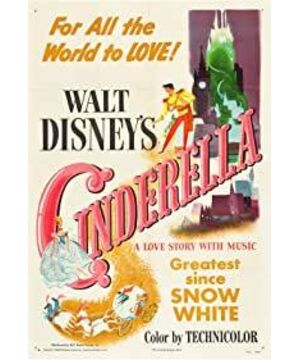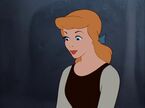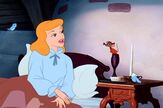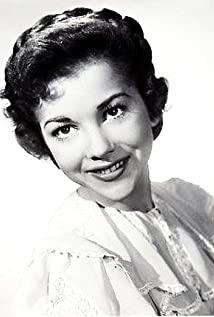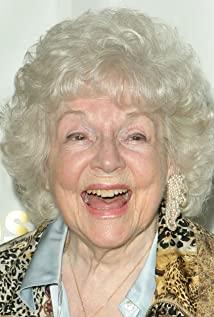Following the last review of "Snow White and the Seven Dwarfs", this time we will review the second movie in the Disney Princess movie series-"Cinderella" (for convenience, hereinafter referred to as "Cinderella") .
Cinderella fairy tale + cat and mouse = Cinderella
Although it has been 13 years since Disney's first princess movie "Snow White", "Cinderella" still copied the traditional princess formula of "fairy tale restoration + singing and dancing + funny supporting role". But this perfect formula seems to be overplayed in this film-there is a very subtle sense of separation between the storyline of the supporting characters (the mice) and the main storyline of Cinderella.
This sense of fragmentation is reflected in the fact that the little animals headed by Gus are too important to promote the plot, but they have too little interaction with Cinderella . In other princess films, the protagonist is always surrounded by one or more supporting characters who play important roles such as nanny, staff, pistachio, bodyguard and so on. Try to imagine Musu to Mulan, Sebastian to Ariel, Djinn to Aladdin, and Xuebao to Anna. It’s not difficult to see the Disney princess film formula " The “supporting role” seasoning has a huge effect on the final flavor of the film.
In these movies mentioned above, if the supporting role plays a huge role in promoting the plot, then the communication and interaction between the supporting role and the protagonist are indispensable. But in "Cinderella", I saw a very subtle point: the little animals played a role second only to the fairy godmother in the change of Cinderella’s destiny, but the exchanges between Cinderella and the little animals were very few. few.
Almost none of the three veteran princesses in the early stage relied on their actions to promote the development of the plot, and Cinderella was no exception. In this film, the little animals helped Cinderella transform her mother’s clothes into evening dresses, and the mice stole the necklaces and belts of the two sisters (the side caused Cinderella’s first set of clothes to be torn Consequences). When going to the palace ball, the animals formed a pumpkin horse convoy to escort Cinderella. At the critical juncture when Cinderella was locked into the attic by her stepmother, the animals struggled to regain the key from the evil cat so that Cinderella could show up and try her shoes... …In this film, if the main line part of Cinderella’s fairy tale is removed, the part of the mice that is picked up can even be made into a cat and mouse micro-film .
However, compared with the selfless dedication the mice made for Cinderella, the communication between Cinderella and the mice makes people feel that they can only be described as precious words as gold. Of course, since the three veteran princesses in the early stage have not developed self-talking attributes like the late princesses (Le Pei and Anna), Cinderella is given to others in the whole movie. Kind of a dull impression of shyness and bad words. But in this film, the proportion of dialogue that Cinderella assigns to these savior-like supporting actors is even lower than that of the prince who has only one side. Therefore, although the film shows us a lot of scenes of Cinderella being kind to these little animals that are not seen at home to show Cinderella’s kindness, mice are frequently seen in the process of watching the movie (mao). When a life-and-death duel was staged under the mouth, there was always a subtle question of "What is Cinderella doing at this time?" "Cinderella didn't tell them to do this. Are the mice too proactive?"
From the 14-year-old live-action remake of Cinderella, it can be seen that Disney has not discovered this problem. In the live-action version, the scenes of the mice are almost completely deleted. These free time periods are replaced by the relationship line between Cinderella and her father and Cinderella’s first encounter with the prince before the ball. The image has also become fuller because of this, and the love between the prince and the prince is not as obtrusive and shallow as love at first sight due to the beautiful evening dress in the original version. In this regard, I personally think that the real-life remake has been very successful and has contributed to the restoration of the negative image of Cinderella among modern women.
Ahem, I'm going to cleanse Cinderella
Speaking of the negative image of Cinderella, as the princess most criticized by modern feminists among all Disney princesses, I can't help but solemnly clean up for it.
First of all, the most ingrained stereotype of the Cinderella image in the original version in the hearts of contemporary audiences is-doing nothing all day long, delusional to be saved by the prince . However, before the palace ball, Cinderella never imagined that one day she would live a rich life by fishing for a beetle-in-law. Although Cinderella’s theme song is "A dream is a wish your heart makes", Cinderella’s "Dream" is not about finding a rich family to marry, but an abstract yearning for a happy life. Even if everyone considers wealth and status as the only benchmark for success in life, this dream is not shameful and excessive, not to mention the hardships of Cinderella at home at that time. Only hopes and dreams in the future can help her to maintain her kindness and love of life in the midst of suffering, avoid self-defeating and abandoning herself under the abuse of her stepmother and sisters, and become a complete slave in spirit.
Speaking of the death of her parents and becoming slaves, one can't help but think of a woman in the same tragic situation in the history of Chinese literature-Shi Xiangyun in the Dream of Red Mansions. For Shi Xiangyun, it is her romantic nature, love and hate nature, and love of literature that make her always cherish the noble spirit of a lady in the tragic experience of being a lady in name but in reality as a slave. And the high-spirited passion for life. Therefore, we condemn these "women in distress to keep their dreams of a better life in the future" as a way of life that is insufficiently independent and inconsistent with "modern feminism". "The self-righteousness.
Secondly, Cinderella is often accused of clinging to the powerful and the poor and the rich. Otherwise, why do so many men at the palace ball hook up with the prince at first sight? In fact, this is also a very misunderstood part of the original "Cinderella" movie. In the movie, the encounter between Cinderella and the prince is only because the prince is attracted by Cinderella’s beautiful appearance-here can be a criticism of the prince’s appearanceism, but Cinderella is not actually before the prince finds people in the city the next day Knowing that the other party is a prince, so that when the twelve o'clock bell rang, Cinderella said goodbye to the true prince on the grounds that "I haven't seen the prince". This shows that Cinderella's love for the prince has nothing to do with her prince status.
Finally, under the circumstances of the time, the film not only failed to solidify the stereotypes of women, some of its settings could even be called feminist models and pioneers at the time . Let us look back at the origin of the palace ball as the source of all evil: this ball was not organized because the prince wanted to provoke the flowers and the grass and accept the concubines, but because the prince’s father was anxious to hug his grandson, so it was in a hurry. The prince chooses the concubine of the dance office. As for the concubine's beauty, ugliness, nobleness, and moral conduct, as long as the prince can see a girl give birth to the king a fat boy, he will be satisfied.
In this context, in the end of the film, the prince and princess married by true love, not just for the purpose of creating a forced union of offspring (although it is a flash marriage of love at first sight) is itself a kind of "women are born to be a fertility tool" towards the king. Silent criticism of his mate choice view. In those days (friends in the 1950s!) this idea was already a very avant-garde expression of feminism.
Therefore, in summary, criticizing Cinderella's behavior without considering the background environment and the detailed settings of the film is completely injuring the friendly forces.
As the follow-up princess movies have begun to discuss more subtle issues such as the choice between family and self, the external and internal beauty of people, breaking the shackles of the original family, self-acceptance, etc. (Aurora is sorry, not talking You), as Disney’s last princess film that focuses exclusively on the virtues of kindness, the film "Cinderella" is more aimed at making us believe that the beauty of human nature will eventually bring us good rewards .
Just like in the magic performed by the fairy godmother, the most shining evening dress disappeared after twelve o’clock, but the virtues are like hidden in the deepest, colorless and transparent glass shoes, which can stay in later life. In the trace and finally lead you to a happy life.
View more about Cinderella reviews


